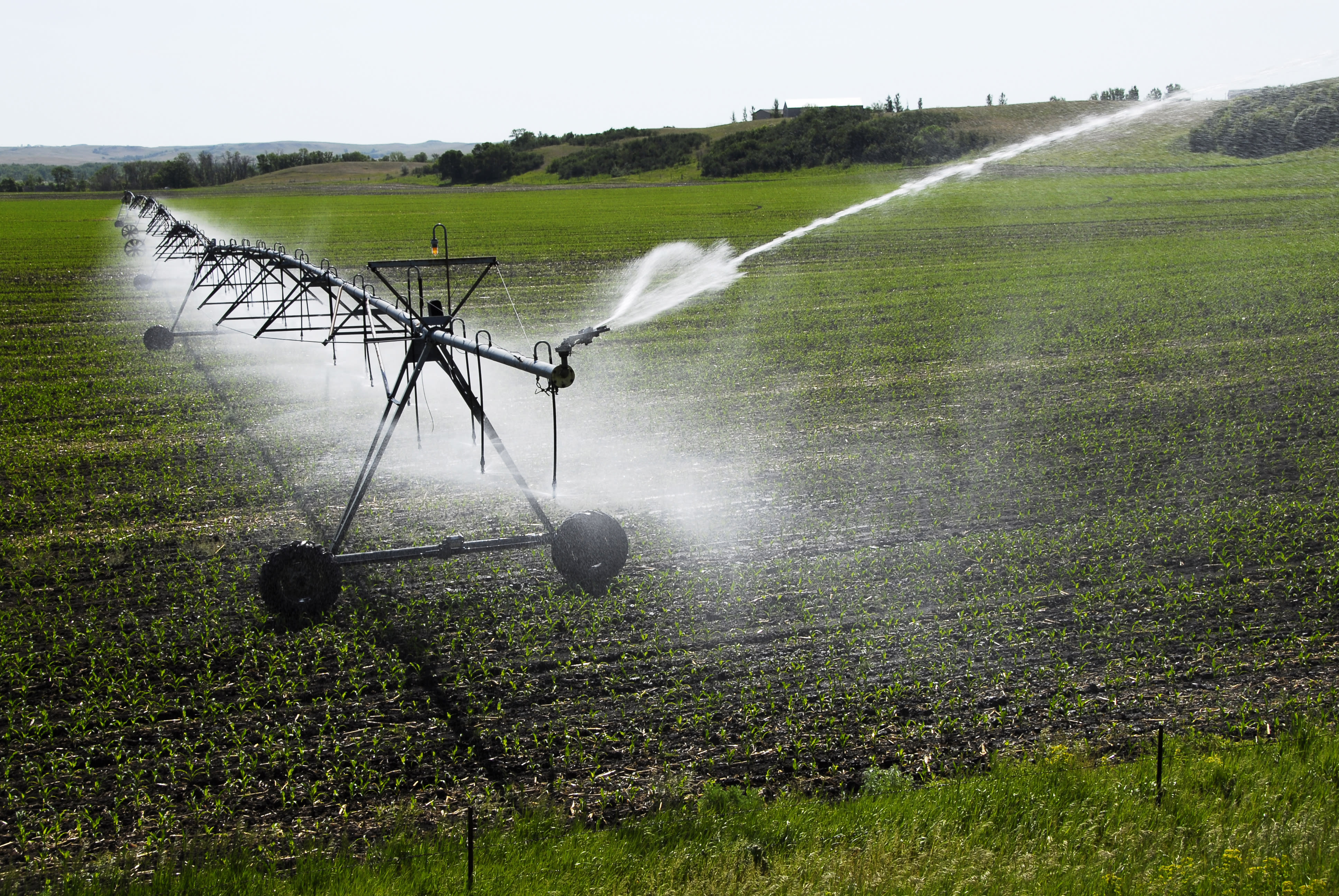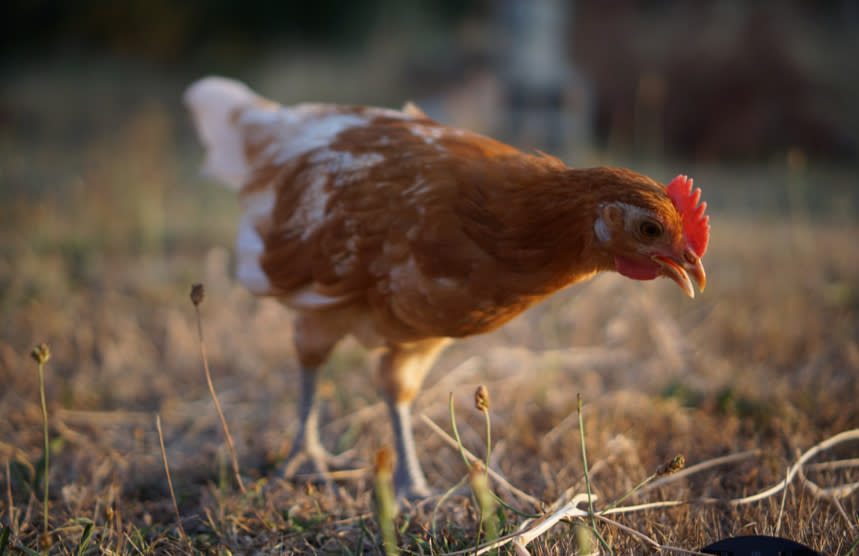




Are chickens really as smart as the movies cracks them up to be?

Ginger, Rocky, and the rest of the flock from the beloved 2000 stop-motion animation Chicken Run are back in Chicken Run: Dawn of the Nugget.
This long-awaited sequel picks up where the original ended. The chickens have escaped the evil Mrs. Tweedy’s farm and are enjoying their life of freedom on an island paradise. However, things get more complicated when Ginger and Rocky discover that their daughter, a rambunctious little chick named Molly, has flown the coop in search of adventure. And wouldn’t you know it—Molly finds herself trapped in the last place any chicken wants to end up—a chicken farm.
Through a fanciful and exaggerated lens, both Chicken Run films explore the realities of the food industry from the perspective of animals subjected to its horrors. Let’s take a look at what these chick flicks get right and wrong about the poultry and egg industries.
Chickens are more intelligent than many people think
Okay, so maybe chickens in real life aren't hatching intricate escape plans, constructing ingenious flying contraptions, or developing a bartering system with rats who deliver their supplies. But, chickens really are smarter than humans tend to give them credit for.
Ginger, Rocky, and the rest of the gang are remarkably crafty birds. Chickens can be tricky in real life too. Neuroscientists have observed roosters deceiving potential mates into coming closer by making a "food call" even when there's no food around. This gambit won't work forever, though, as hens eventually learn to ignore males who frequently misuse their food call.
In the films, the bespectacled, Scottish hen named Mac is the resident scientist—always ready to make the necessary calculations to turn Ginger's far-fetched schemes into a reality. You probably won't see a chicken solving complex equations using a pen and paper like Mac, but did you know that even newly hatched chicks can do math?
Various studies have demonstrated that chicks can count. When chicks are presented with two reward options, the young birds will choose the better of the two. For example, say there are two screens. The right screen has three treats behind it, the left has two. Chicks will reliably choose the screen on the right. However, it goes a step further. If the chicks watch you subtract one treat from the right screen and place it on the left side, now the chicks will choose the left screen. In other words, the chicks were able to figure out not only that 3>2, but that 3-1=2, and 2+1=3.
Chickens really are socially complex birds
The Chicken Run films depict chickens as emotional creatures who have formed a tight-knit community. In reality, researchers studying chickens say pretty much the same thing. Chickens can recognize the faces of up to 30 other individuals in their flock. Chicks imprint onto their mothers' faces within mere days of hatching. And in group settings, chickens are quick to observe the behavior of others, infer a "pecking order," and act accordingly.
Within these social hierarchies, chickens communicate with one another using at least 24 distinct vocalizations as well as a range of different visual displays, according to researchers Lori Marino and Christina M. Colvin writing for The Someone Project. While a flock of chickens might sound like a cacophony of mindless bawks and squawks to humans, Marino and Colvin write that these birds are communicating with remarkable specificity.
One study showed that when roosters were presented with images of potential prey, not only did they produce specific warning sounds to alert others of the impending danger, but they attenuated the sounds they made depending on if the threat was an aerial predator in the sky or a terrestrial predator on the ground.
Chickens have even been observed showing the capacity for empathy. In 2011, a study recorded the emotional responses of mother hens in relation to their chicks' stress levels. The researchers found that when chicks become distressed, their mothers' heart rates increase, they become more alert, stop preening themselves, and have a reduction in eye temperature. All of these are signs of anxiety as a result of no stimulus besides the stress of their chicks.
Many chicken farms are actually worse than what the movies portray
The egg farm in Chicken Run and the poultry farm and slaughtering facility from Dawn of the Nugget are frightening because the human characters running them are so villainous. Yet, the depictions of the farms themselves are far less horrific than many real-life factory farms, or concentrated animal feeding operations (CAFOs). If these movies showed an honest depiction of what life is like for chickens inside of a CAFO, these films would probably be too disturbing for children to watch.
Here are just some of the horrors left out of both movies:
- Battery cages: Banned in Europe, but not the US, battery cages are tiny, wire cages designed to house egg-laying hens for almost the entirety of their lives. According to 2017 United Egg Producers guidelines, each bird gets 67-86 square inches of space. For reference, a standard sheet of printer paper is about 90 square inches. Sadly, egg-laying hens aren't protected by any specific, federal law—though an increasing number of US states and countries around the world are enacting measures to spare hens from extreme confinement.
- Forced molting: In order to artificially maximize egg production, industrial CAFOs subject hens to various forms of cruelty. Molting is a natural seasonal event during which chickens produce fewer eggs, eat less, and replace their feathers. During forced molting, however, chickens are systematically denied access to food, water, and light, a harmful and stressful process that halts the reproductive cycle, reduces body mass, and causes plumage loss. Once the starvation period ends, chickens produce eggs at even higher rates.
- Debeaking: Chickens can sometimes become prone to aggressively pecking at themselves or at one another, which can even result in cannibalism. There are a range potential causes for this behavior such as nutritional deficiencies, lack of foraging opportunities, genetics, and inadequate housing conditions. To prevent cannibalism, some companies resort to a process called "beak-trimming" or "debeaking." Banned in certain parts of the world, debeaking is cruel and painful, particularly when hot blades are used. Routine hot-blade beak trimming is banned in the UK and some European countries, and if beak trimming is performed, it must be done using infra-red technology when the chicks are younger than 10 days old.
Chickens do thrive in an enriched environment
In Dawn of the Nugget, little Molly and her friend Frizzle stumble into "Fun-Land Farms," a heavily guarded poultry processing facility. At first, the two chicks think that they've hit the jackpot, because within Fun-Land Farms, they find a giant playground complete with swingsets, slides, and an all-you-can-eat buffet. Soon, they'll discover that there's something more sinister going on than meets the eye.
On real-life factory farms, chickens barely have enough room to stand up and walk, nevermind an entire playground to enjoy. However, chickens who are given the opportunity to engage in entertaining and enriching activities end happier and healthier as a result.
According to the International Association of Animal Behavior Consultants (IAABC), enrichment activities can help prevent chickens from engaging in negative behaviors like cannibalism and feather plucking—behaviors often seen on CAFOs. Instead, enriched environments help chickens develop natural behaviors, build problem-solving skills and cognitive function, and even promote good bone health.
Just as for cats, dogs, and other companion animals, there are many different sorts of enrichment that chickens enjoy. Something simple like a "dig box"—an object filled with a mix of dirt and treats—encourages chickens' natural inclinations to forage and dust bathe. People who keep chickens can get more creative as well, providing auditory, tactile, and visual enrichment. Check out this video of a chicken happily creating music on a xylophone!
Chickens are subjected to cruel forms of slaughter
One of the scariest scenes in Chicken Run: Dawn of the Nugget is when the chickens within Fun-Land Farms are on a conveyor belt slowly drawing them toward the slaughter. This highly mechanized system for killing chickens as efficiently as possible sadly echoes the realities of slaughter on intensive poultry operations.
By federal law, cows, pigs, and other farmed animals are supposed to be made unconscious so that they don't feel any pain when they are slaughtered. Known as the Humane Slaughter Act, this law does not extend to chickens or turkeys, despite the fact that these birds are some of the most widely slaughtered animals in the world. Between 8 and 9 billion chickens are killed for their meat every year in the United States.
Many chickens meet their demise in a shockingly heartless process called "live-shackle slaughter." An all-too common method, chickens are hung upside down, and their legs are forced into metal stirrups that can break their bones. The birds then pass through a bath of electrified water, intended to render them unconscious. However, this process is prone to failure, leading to countless chickens suffering agonizing deaths in which their throats are slit and their bodies dropped into a vat of boiling water.
Chickens really do mourn the loss of loved ones
In the first Chicken Run, an egg-laying hen named Edwina is taken to the chopping block when she hasn't produced enough eggs to satisfy Mrs. Tweedy. The impact is devastating to the rest of the birds on the farm, who become distraught at first, and eventually depressed, at the loss of their friend.
This isn't mere fiction written into the screenplay to add more drama to the story. In her book How to Speak Chicken, author Melissa Caughey discusses her observations on how real-life chickens react to trauma and loss.
After witnessing or experiencing something traumatic, chickens can "sink into a depression and show signs of fear and distress for a long time afterward," Caughey writes. She recounts one experience when a weasel broke into a friend's chicken coop and killed nearly all of her two dozen hens. Only three chickens survived, and they stopped laying eggs for months, spending most of that time in hiding.
Even when a hen dies from natural causes, Caughey goes on, the others in her flock often go into a form of mourning.
"From the safety of the coop, they call out, using the same sound that means 'Where are you?' when they are free-ranging in the yard and can't find a missing member of the flock. A grieving hen avoids interacting with the flock and sits in a corner with puffed-up feathers like a chicken that feels ill."
Enjoy the film and join the movement
Chicken Run: Dawn of the Nugget is an action-packed and laugh-filled film for the whole family to enjoy. As lighthearted as the movie is, it's also a great reminder that chickens are intelligent, emotional, sentient creatures—not mindless commodities—who deserve better lives than the ones factory farms provide.
Fortunately, compassionate people around the world are working hard to produce positive results for chickens and other farmed animals. In recent years, concerned consumers have pressured retail giants like Walmart, Walgreens, and CVS to make cage-free commitments (though some are falling behind on these commitments). More than 2,000 restaurant chains—including Burger King, Chipotle, Starbucks, and Taco Bell—have made public promises to go completely cage-free as well.
Meanwhile, the Better Chicken Commitment (BCC) is another positive movement really picking up steam. Embraced by more than 200 companies so far, BCC essentially requires chickens to be reared in quarters that are more spacious, enriching, and healthy. The commitment also requires the use of higher-welfare breeds, which are healthier.
Learn more about The Humane League's campaigns that are creating better futures for animals.





